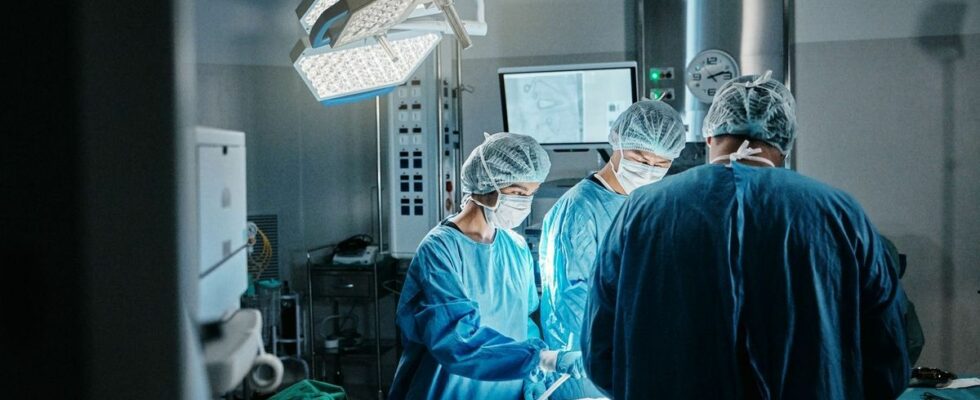Published on
updated on
Reading 3 min.
Ten years after the start of uterus transplants, a revolutionary technique in reproductive medicine, a study has provided an initial assessment. This technique allows healthy children to be born, but at the cost of complications for mothers and donors.
Since the first successful transplant in 2012 in Sweden, this procedure has given new hope to many women with uterine infertility. Today, more than 70 children have been born using this technique worldwide, offering promising prospects but also raising questions about its long-term safety and effectiveness.
A decade of progress and lessons
It was in 2012, in Sweden, that the first baby was born thanks to a uterus transplant, marking a historic turning point. Since this success led by the team of Mats Brännström, professor of obstetrics and gynecology at the hospital in Gothenburg (Sweden), the procedure has been performed in a dozen countries, including France, the United States, and Brazil.
WHO IS SUITABLE FOR UTERUS TRANSPLANTS?
For congenital reasons or as a result of surgical treatments, some women do not have a uterus, which prevents them from having a child. For them, the possibility of benefiting from a uterus transplant could represent hope.
- Absence of uterus may be congenital. This disease, called MRKH syndrome (for Mayer-Rokitansky-Küster-Hauser syndrome), affects one in 4,500 women. It is characterized by the absence of the uterus and the upper part (2/3) of the vagina. It can be isolated but is most often associated with renal and vertebral anomalies and, to a lesser extent, hearing and heart problems. The first sign is the absence of periods in young women who also have normally developed secondary sexual characteristics (breasts, etc.). The genetic origin of this syndrome remains partly mysterious. The treatment consists of reconstructing a neovagina in order to allow a normal sexual life… but does not allow having a child outside of adoption or surrogacy, which is prohibited in France.
- Finally, removal of the uterus (hysterectomy) may result from surgical treatment for endometrial cancer, fibroids, prolapse, endometriosis, etc.
The study, the Dallas UtErus Transplant Study (DUETS), was conducted in about 20 American cases and designed to evaluate the long-term results of uterine transplantation and assess its safety.
According to the authors, out of a hundred transplants carried out as part of clinical trials, nearly 70 living children have resulted. In France, three births have been made possible thanks to the work carried out using living donors by the team of Professor Jean-Marc Ayoubi (Foch Hospital, Suresnes). Find the video testimony of one of the beneficiaries, Deborah Berlioz, at the end of the article.
“These data are encouraging, but they also highlight the challenges that need to be overcome, particularly in terms of the selection of donors and recipients,” explains the professor.
Persistent technical and ethical challenges
Uterus transplantation is a complex procedure, requiring teamwork between surgeons, obstetricians, and immunologists. The operation, which lasts on average 10 to 12 hours, presents significant risks for both the donor and the recipient.
A new clinical trial, published in the Journal of the American Medical Association (JAMA)was conducted on 20 women suffering from absolute uterine infertility, with the participation of 18 living donors and 2 deceased donors.
The results show that all the transplants were successful, allowing 14 of the transplanted women to give birth to at least one living child.
- However, 11 of the 20 recipients experienced complications. The authors report that 50% of successful pregnancies were marked by maternal or obstetric complications, including gestational hypertension (14%, or 2 women), cervical insufficiency (14%, or 2 women) – characterized by early dilation of the cervix outside of labor – as well as preterm birth (2 cases, 14%).
- Among the 16 children born alive, no congenital malformations were detected. “Initial data on children born after uterine transplantation also indicate that no increased incidence of abnormal physical or mental development was detected,” the study states.
- On the donor side, 4 of the 18 living donors also suffered grade 3 complications, related to the laparotomy for two of them (dehiscence of the vaginal vault and fecal impaction) and to the robotic-assisted procedure for the other two (ureteral obstruction and bilateral thermal injuries of the ureters). However, no clinical sequelae were observed in these donors after a 4-year follow-up.
NO to diets, YES to WW!
The future of uterine transplantation: hopes and uncertainties
While new research continues to improve techniques and reduce risks, uterine transplantation remains an evolving field. It should be approached carefully and supervised by an experienced medical team to maximize the chances of success while minimizing risks to the mother and donor.
Researchers are exploring the possibility of using artificial uteruses or bioprinting techniques to compensate for the lack of donors. At the same time, the question of accessibility to this procedure, often reserved for clinical trials or very specific programs, raises the issue of equity in reproductive health.
